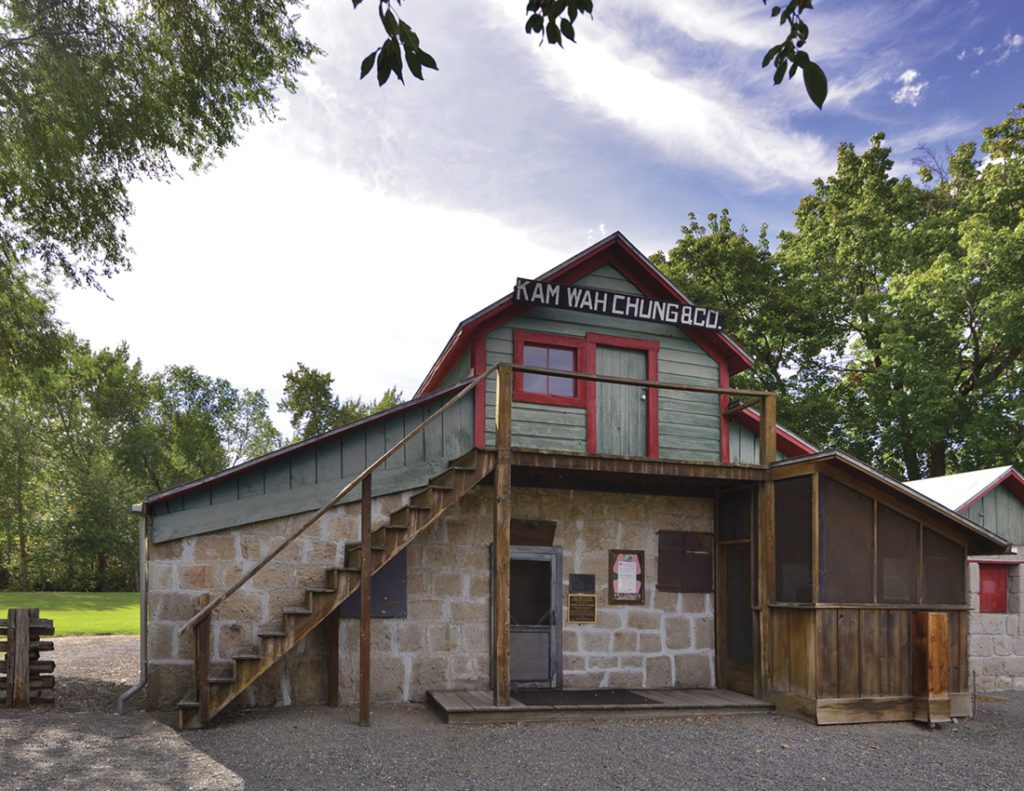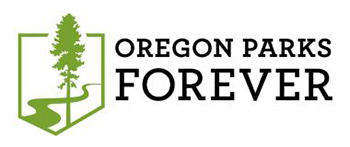
Asian American Native Hawaiian/Pacific Islander Heritage (AANHPI) Month is a time to reflect upon and celebrate the remarkable achievements of the AANHPI community in our nation’s history. Asian, Native Hawaiian, and Pacific Islander people represent a vast range of unique and diverse cultures and countries. This month we highlight a Chinese community history.
Some of our members might recall Oregon Parks Forever’s campaign to raise funds to help preserve and restore the historic Kam Wah Chung & Co building in John Day, Oregon. These funds helped to preserve an important part of Chinese Culture and history. The Kam Wah Chung & Co. Museum building and collections represents a legacy and the contributions of Chinese emigrants in the settlement of the West. For over fifty years, the business enterprises and medical practice of Kam Wah Chung & Co. owners Lung On and Ing Hay served the city of John Day and the greater eastern Oregon community. The Kam Wah Chung collection of documents, artifacts, and medicinal materials within hold great wealth of information for a broader understanding of western history and the promise of extensive future scholarship.
Originally established as a trading post in the 1870s, Kam Wah Chung & Co. was purchased by immigrants Lung On and Ing “Doc” Hay in 1888, and used the building as a Chinese medical clinic, general store, community center and residence until 1940.
The Kam Wah Chung and Company was a Chinese-owned grocery, dry goods store, and clinic in John Day. Built as a trading post along The Dalles Military Road in about 1866-1867, the store provided a gathering place for the Chinese community. It also functioned as a temple, unofficial post office, library, business and interpretive center, contract labor pool, social club, dormitory, and apothecary shop. Established in 1871 as a contractor of Chinese labor, The Kam Wah Chung and Company operated during the height of Grant County’s influx of Chinese miners and laborers (1870-1910). (Oregon Wikipedia)

This National Historic Landmark, today, includes the museum and interpretive center. In 1888 it became home to two Chinese immigrants, Ing “Doc” Hay and Lung On. Lung On was the general store proprietor and a businessman, while “Doc” Hay was a practitioner of herbal medicine. For over 60 years the building was a social, medical, and religious center for Oregon’s Chinese community.
Lung On (1863–1940) was a Chinese scholar, and businessman who immigrated to Oregon in the United States. He opened the apothecary store, , with his partner, Ing “Doc” Hay. On became an established figure in the community of John Day. He represented Chinese laborers as an interpreter and translator since he was fluent in both Chinese and English. On established businesses with investments in labor, mining, real estate, and automobile dealership. He was well-respected in his community and remained in John Day until his death in 1940. The Kam Wah Chung building was deeded to the City of John Day in 1955, after Doc Hay’s death, to be used as an interpretive center and cultural museum. But this would not become reality until much later. After remaining vacant for about twenty-five years, the building was given to the state by the city of John Day in 1975.
Inside this small stone building was found an astounding treasure of Chinese herbs and cultural objects that date from the late 1800’s and early 1900’s. More than 500 herbs are still preserved at the museum, making it one of the largest collections of traditional Chinese medicine in North America.
If you have not ventured to John Day to see the museum, consider making a trip this summer. The museum was listed on the National Register of Historic Places in 1973 and was designated a National Historic Landmark in 2005.
In 2010, OPB documented Kam Wah Chung in an episode of Oregon Experience (View it here on the OPB website).
Reservations for museum tours are available through the State Parks website ; tours are free but space is limited to groups of eight.
The John Day Historical Society operated a museum at the site starting in 1976; but in the late 1990’s it became clear that the society lacked the funds for the upkeep and maintenance the site needed. In 2004, Oregon Parks Forever raised funds for the state’s restoration project, and Kam Wah Chung became a State Heritage Site in 2005.In 2010, OPB documented Kam Wah Chung in an episode of Oregon Experience (View it here on the OPB website).
Tours operate daily from May to October. Reservations for museum tours are available through the State Parks website; tours are free but space is limited to groups of eight.
The Friends of the Kam Wah Chung & Co Museum is a non-profit organization run by volunteers whose mission is to provide public access to the historic site. They are committed to the protection and preservation of the Kam Wah Chung and Company Museum. In addition, we educate and inform future generations about the importance of the Chinese immigrants whose influence and contributions helped define the culture and history of the American West.
